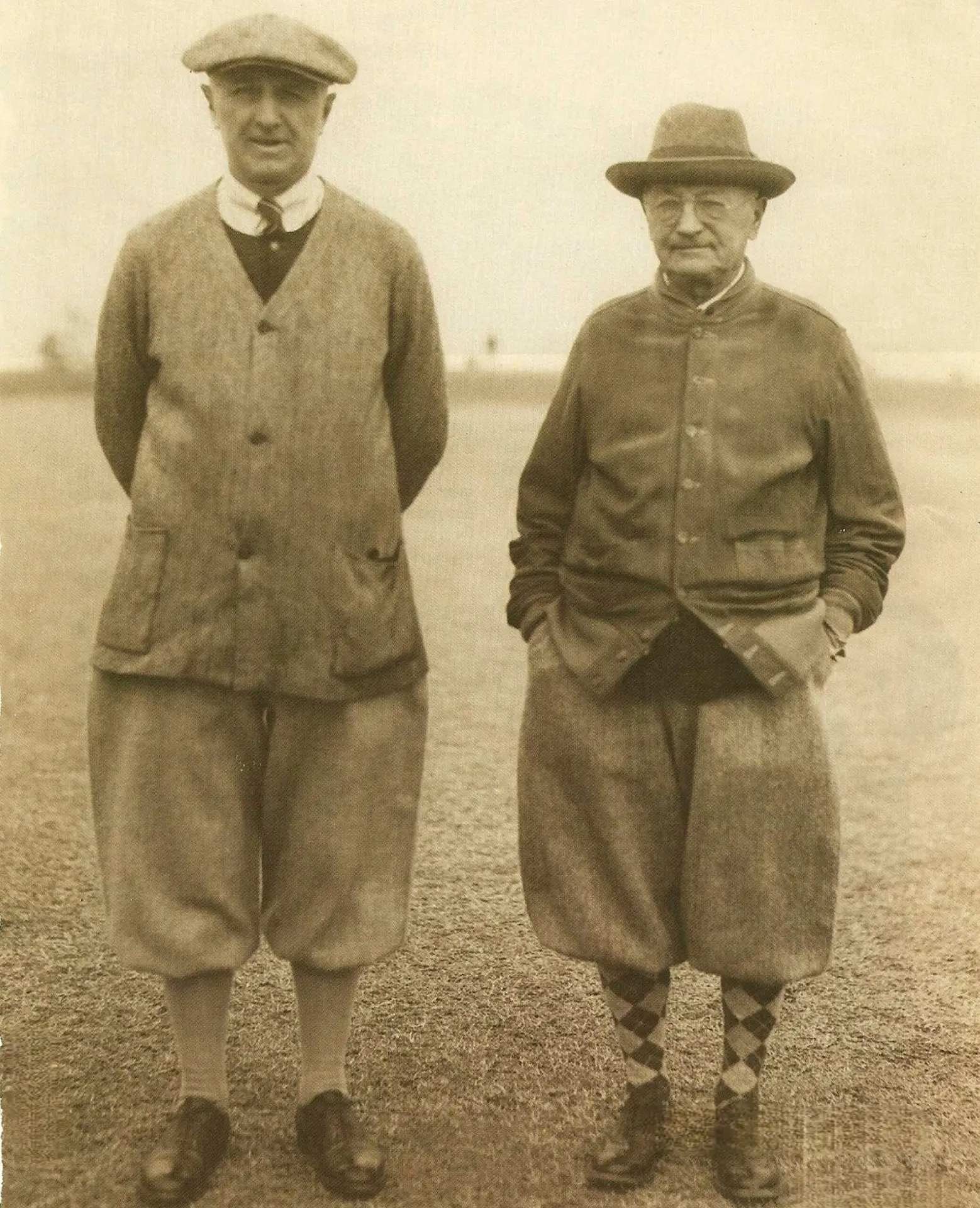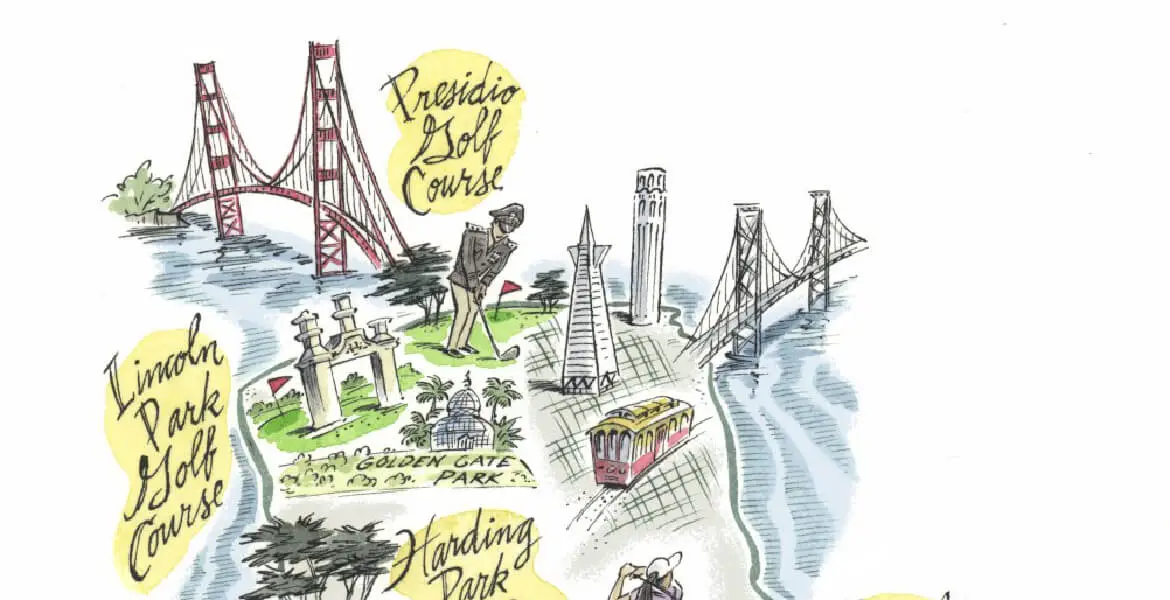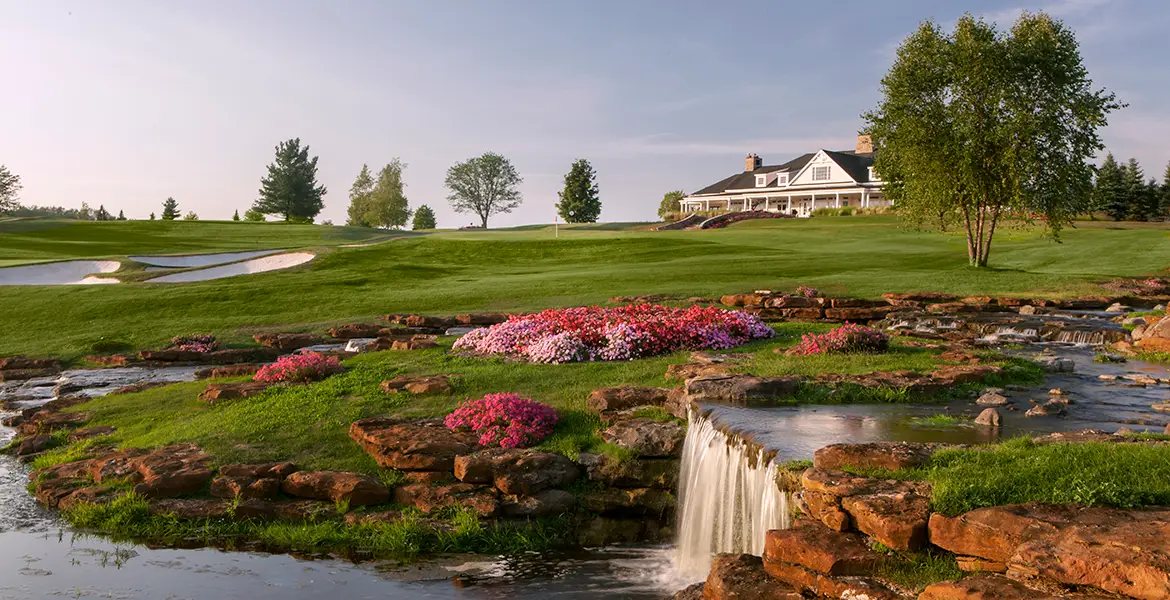Two legends—father and son—spent five decades creating a third: Oakmont
One popular route to achieving legend status, especially at the start of the 20th century, was to make a lot of money, become obsessed with golf, and then do something noteworthy in the game.
Case in point: Henry Clay Fownes. Born in 1856 in Pittsburg, Pa. (it wasn’t officially Pittsburgh until 1911), he entered the family steel business at a young age, grew it successfully, and sold out to Andrew Carnegie in 1898. With time—and money—on his hands, he found golf, possibly with Carnegie’s help.
A more dramatic origin story has it that before golf, Fownes tried another newly popular pastime, bicycling. Trying to patch a tire, he injured his eyes and went to a doctor who thought the resulting damage indicated arteriosclerosis, meaning the 39-year-old had only two or three years to live. That led him to travel “about the country seeking relaxation,” his son recounted later, and somewhere along the way he discovered golf.

Whichever story you prefer, in very little time H.C. and his sons—William Clark and Charles—were skilled players: H.C. qualified for five U.S. Amateurs and competed in the 1901 U.S. Open. Bored with local courses, he and the boys decided to build their own.
Work began in the fall of 1903 on 191 acres located about 14 miles northeast of Pittsburg in Oakmont Borough, on hills overlooking the Allegheny River. According to the USGA, “With a crew of 150 men and some two dozen mule teams, Fownes spent a year building Oakmont on old farmland where wide, sweeping vistas make it ideal for a links-style course.”
Reported the Pittsburg Post when Oakmont opened in October, 1904, Fownes “has practically, unaided, superintended every detail of its development.”
Besides hard, Fownes wanted a course that could handle the new wound-rubber Haskell ball, which was longer and easier to control than the gutta percha. His 6,400-yard par-80 design featured a 560-yard par six and eight par fives.
H.C. was president of Oakmont until his death in 1935, when son William took over. But W.C.’s presence began being felt in 1911 when he became head of the grounds committee and, with his father’s blessing, started making things even tougher.
W.C. insisted the greens be famously fast and contoured. Where the original course had fewer than 100 bunkers; W.C. increased that number at one point to more than 300, including the famous “Church Pews,” in time for the 1935 U.S. Open. And to tend those bunkers, W.C. created an extra-heavy rake with wide teeth that left deep furrows.
In 1915, leaders of other local clubs celebrated W.C.’s favorite form of frustration in a poem:
Bill Fownes stood by a green one day,
When someone holed in four;
“I’ll put a stop to that,” said he,
“I’ll build two bunkers more.”
And sure enough he built them both,
Where they could sure be seen;
The first one right before the tee,
The other on the green.”
W.C.’s influence extended beyond Oakmont. An outstanding player, he won the Western Pennsylvania Amateur eight times as well as four Pennsylvania Amateurs and various local events. He competed in the U.S. Amateur 19 times, winning in 1910, and captained the first U.S. Walker Cup team in 1922. He also held numerous USGA leadership positions, including its presidency in 1926–27.
In 1946, W.C. resigned from the club his father founded, upset that the membership wanted the club—in financial peril after the Depression and World War II—to be more social. He died in 1950.





